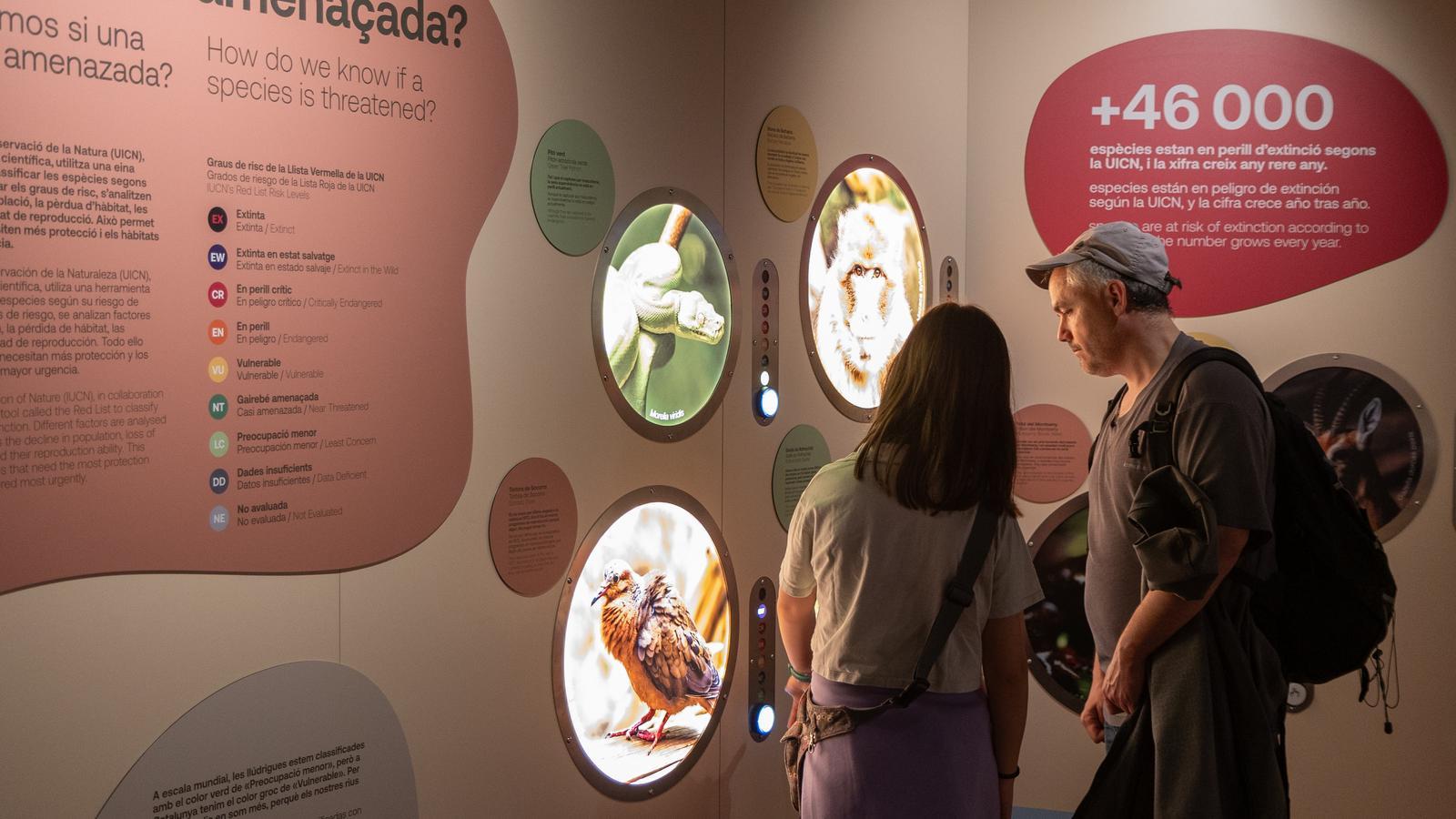The Zoo's new facility gives clues as to what it will be like in the future.
The immersive experience 'Cuida'ls' calls for the preservation of biodiversity.


BarcelonaThe latest installation at Barcelona Zoo is a door open to the future of this space. Three weeks ago, the park opened its doors. Take care of them, an immersive experience that aims to raise awareness among visitors about the importance of preserving biodiversity. This is the zoo's first animal-free facility. It's another step toward strengthening the role this space has long played and must expand in the coming years: becoming more of a center for the conservation and recovery of biodiversity and less of a place to observe exotic animals.
"We want it to be more than just a passive visit, but rather a place to take action," explains Zoo Director Sito Alarcón. He explains that the goal is to Take care of them is to explain the importance of biodiversity and raise awareness about the current situation. "We're not aware that we're part of biodiversity," he says, emphasizing that humans have exploited it beyond what's advisable to the point of putting it at risk. "The window to save it is closing," he warns.
However, Alarcón hasn't lost hope, which he places in the little ones. "Children are the fastest way to indoctrinate parents," he argues. Hence, the Zoo's new installation is aimed primarily at them. It can be seen from the first of the three rooms, an immersive experience in which, through six giant screens, Alba—an animated version of a caretaker—and a friendly otter—one of the animals the Zoo must help reintroduce—welcome visitors with a spectacular video that serves as an introduction.
After the introductory video, the second room focuses on what is already one of the main causes of biodiversity loss: animal trafficking. In the room, various news headlines portray an unfortunately common situation: the confiscation of endangered animals intended for sale on the black market. The hunting of some species also threatens biodiversity. A video shows us elephant legs turned into stools, which are not only ugly but also an attack on the ecosystem.
Conservation Work
The second part of this room, on the other hand, is dedicated to explaining what the Barcelona Zoo does to preserve certain endangered native species, such as the Mediterranean tortoise and the Montseny newt, the most endangered amphibian in Europe. Since 2019, the Zoo has had a new model that seeks to strengthen its role in biodiversity research and preservation. This plan outlines the guidelines the facility should follow to become a biodiversity center.
The plan called for reducing the number of species in the park and focusing efforts on improving facilities and promoting native and endangered fauna. This should mean that more and more native and endangered species are found, as well as animals recovered from confiscations and rescues. What will eventually be missing are animals like elephants. Take care of them serves to reinforce that path.
"The Zoo is an essential tool for recovering severely damaged species by doing conservation work," says Alarcón, who warns that the disappearance of a species is "irreversible." Although he specifies that extinctions are not a problem in themselves, he does warn that what is worrying is the current rate at which they occur. In this sense, he points to the increase in the pH of the sea as one of the factors to monitor, since when the acidity increases, the water itself can dissolve the shells of species such as mussels and oysters.
After the most explanatory part, the last room of the Take care of them It's the one that calls for action. You can sign a commitment to biodiversity, and it provides information about the Barcelona Animal and Companion Shelter (CAACB) and how to collaborate and contribute to the care of the animals it houses.
